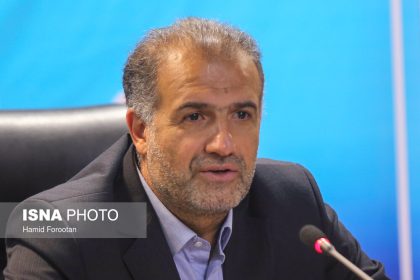In the modern world, architecture and fashion are known as two separate disciplines, but many times these two fields are surprisingly combined with each other and create attractive products. Inspired by Iran’s rich history and culture, many fashion designers and architects present innovative and different designs that not only pay attention to aesthetics, but also consider cultural and social issues. In the following, we will examine one of the newest examples of this overlap in Iran, namely the new Dersa bag. Dersa brand unveiled its new bag in a three-day event in Niavaran, and in this article we will examine its design and production process.
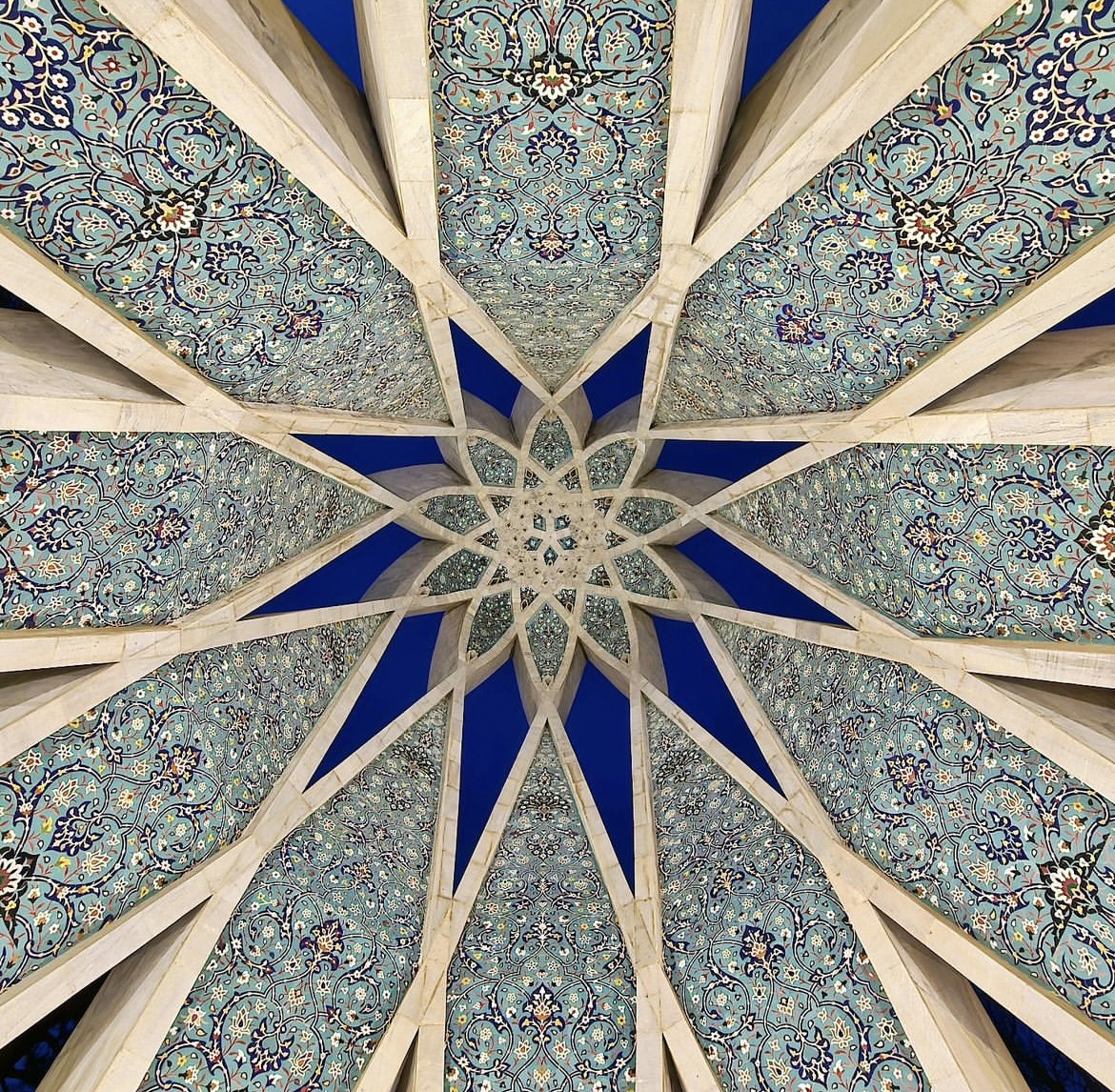
Iranian pattern and architecture
Iranian architecture with its rich and deep history has always been a source of inspiration for designers and artists. Geometric patterns and patterns used in this art, such as squares, triangles, and circles, not only display visual beauty, but also contain stories of culture, history, and nature. These motifs evoke the connection of man with the surrounding world and with a combination of repetition and symmetry in forms, colors and geometry, they inspire a sense of peace and balance to the viewer. In fact, Iranian architecture is a living and dynamic art that can inspire new generations and connect to today’s innovations by preserving cultural identity. This art has always remained attractive and unique by transforming simple forms into complex ones – through repetition and symmetry.
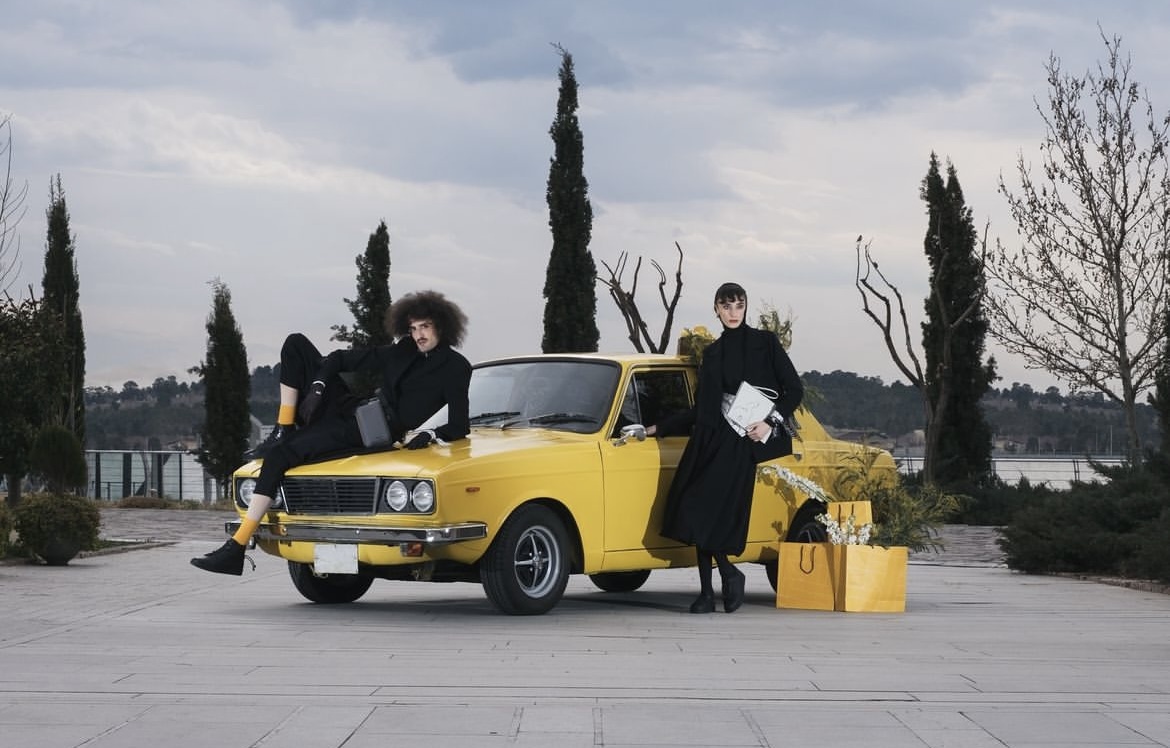

Dersa’s rebranding philosophy; Iranian identity
Darsa, as an Iranian brand, has always sought to express Iran’s cultural identity and, relying on Iranian art and architecture, has created unique products that combine tradition and modernity. After rebranding, Dersa established a deeper connection with Iranian culture and always invites customers to a unique experience of Iranian identity by focusing on details and using cultural symbols and elements.
By creating an atmosphere where art and culture meet, Darsa has been able to find a special place in the minds of its audience. With innovation and creativity, this brand is always trying to present a new concept of Iranian identity and create an unforgettable experience for its customers.
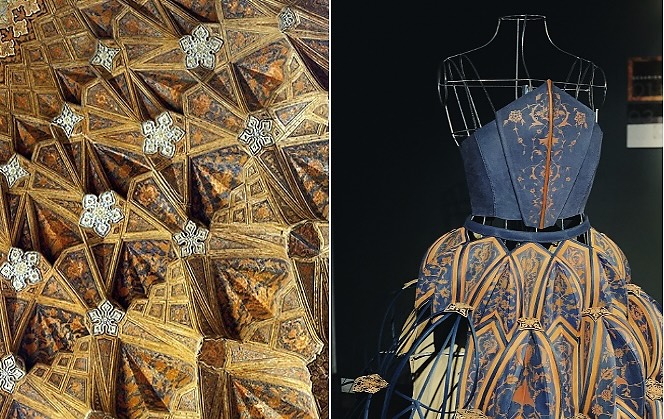

Collaboration between architecture and fashion
Geometry and symmetry are prominent features of Iranian architectural patterns. The use of geometric shapes such as squares, triangles and circles, which refer to global order and balance with repetition and symmetry, has had a special place in Iranian architecture for a long time. These patterns not only create an extraordinary visual beauty, but also contain deep philosophical and spiritual meanings that are rooted in the culture and history of this land.
The combination of these geometric elements helps to create relaxing spaces and makes the viewer have a deeper connection with their surroundings. For this reason, Iranian architecture, as a rich and influential art, has always attracted the attention of designers and inspired new generations. Considering the importance of these features in design and construction, a deep understanding of geometry and symmetry can lead to the improvement of the quality of architectural and artistic works and help preserve the cultural identity of this land. The creative director of Darsa brand, Shahin Fatemi, in a new project in collaboration with Arin Hakimi, has been inspired by the patterns of Iranian architecture and produced a different and creative product. The main goal of this collaboration is to use the patterns and geometry of Iranian architecture to create an artistic and at the same time practical product.
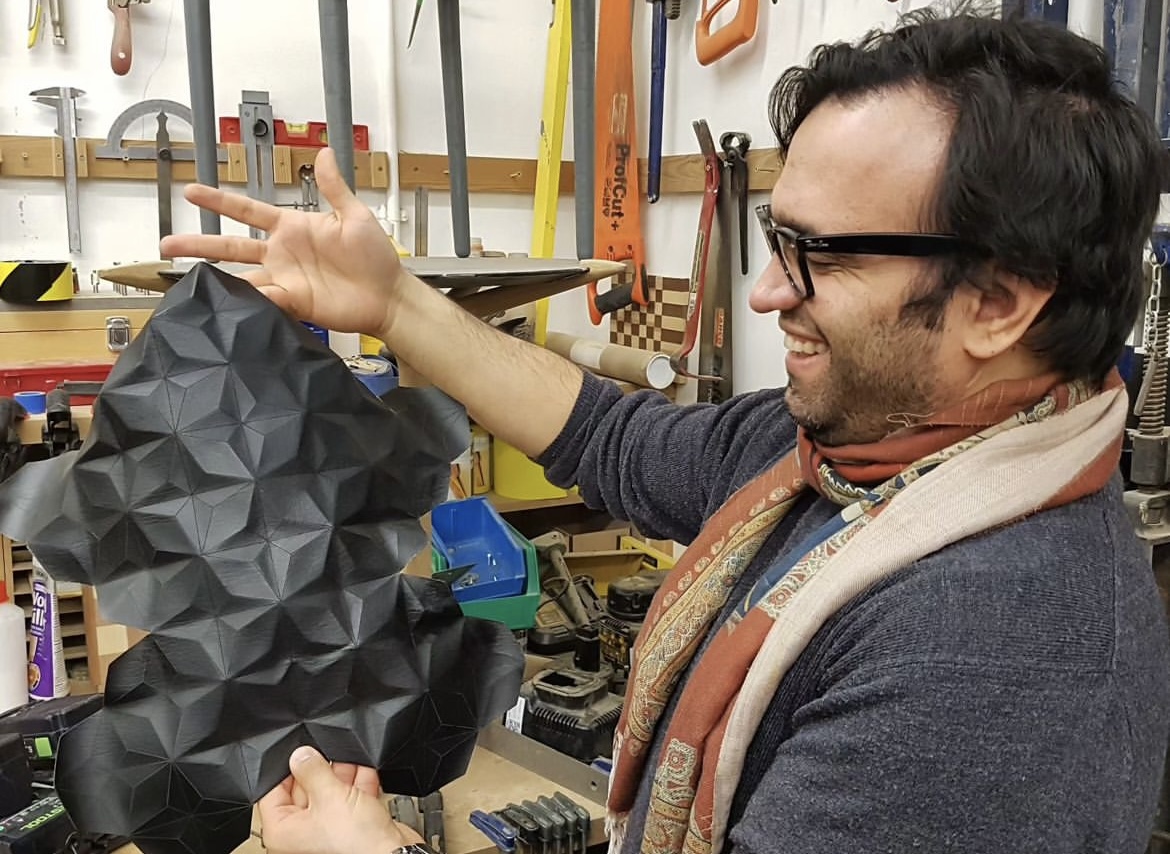

Arin Hakimi, architect and designer
Arin Hakimi, an Iranian architect and researcher, is a graduate of the field of architecture who completed his bachelor’s degree at Tehran University and his master’s degree at IAAC University in Barcelona. He has also worked as a senior designer in the projects of “Zaha Hadid” company. In this project, Hakimi emphasized the importance of nature as a source of inspiration and considers the project’s goal to strengthen the relationship between man and the objects around him: “Nature is the first and most important source of inspiration for me in design. Patterns in Iranian architecture are also inspired by this nature and have been able to create a deep connection between man and his environment. In this project, our goal was to use these patterns not only to create a beautiful product, but also to strengthen this relationship.”
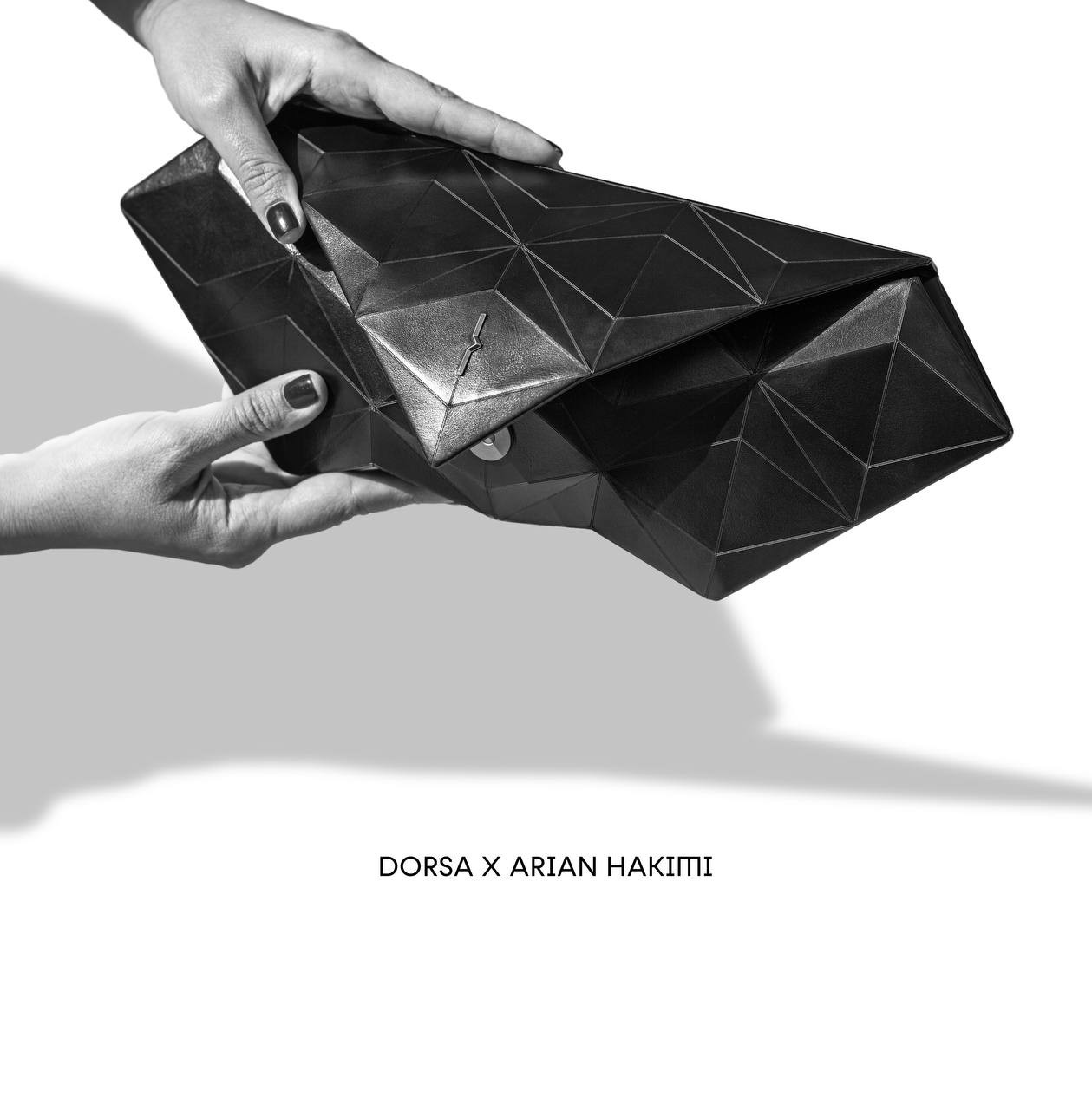

The design and production process of Darsa’s new bag
Creating a new product is a complex and time-consuming process that requires long and accurate trial and error. This process involves examining and evaluating details at every stage of design and production, and not only includes the initial design, but also requires continuous analysis and feedback to improve product quality and efficiency.
Due to the difference in the behavior of leather with paper and cardboard, the Darsa bag was constantly changed in the production process compared to the original cardboard sample. During production, Darsa’s design team would gain new experiences and understand how different materials affect the characteristics of the bag. This process of learning and adapting, after about a thousand prototypes, led to the formation of a quality and unique product that is optimized not only in terms of design, but also in terms of application.
In this trial and errors, a bag was first produced as a prototype, but due to the 7-month long production process, it was not financially and economically sustainable; Because of this, the Dersa design team decided to change their approach to be able to manage higher volume production more effectively. According to Dersa team at the unveiling event, prominent architect Zaha Hadid approved the initial design during his lifetime, which showed the quality and innovation of this idea. Now this prototype is kept as a work of art in the carpet museum and is an expression of the combination of art and modern design.
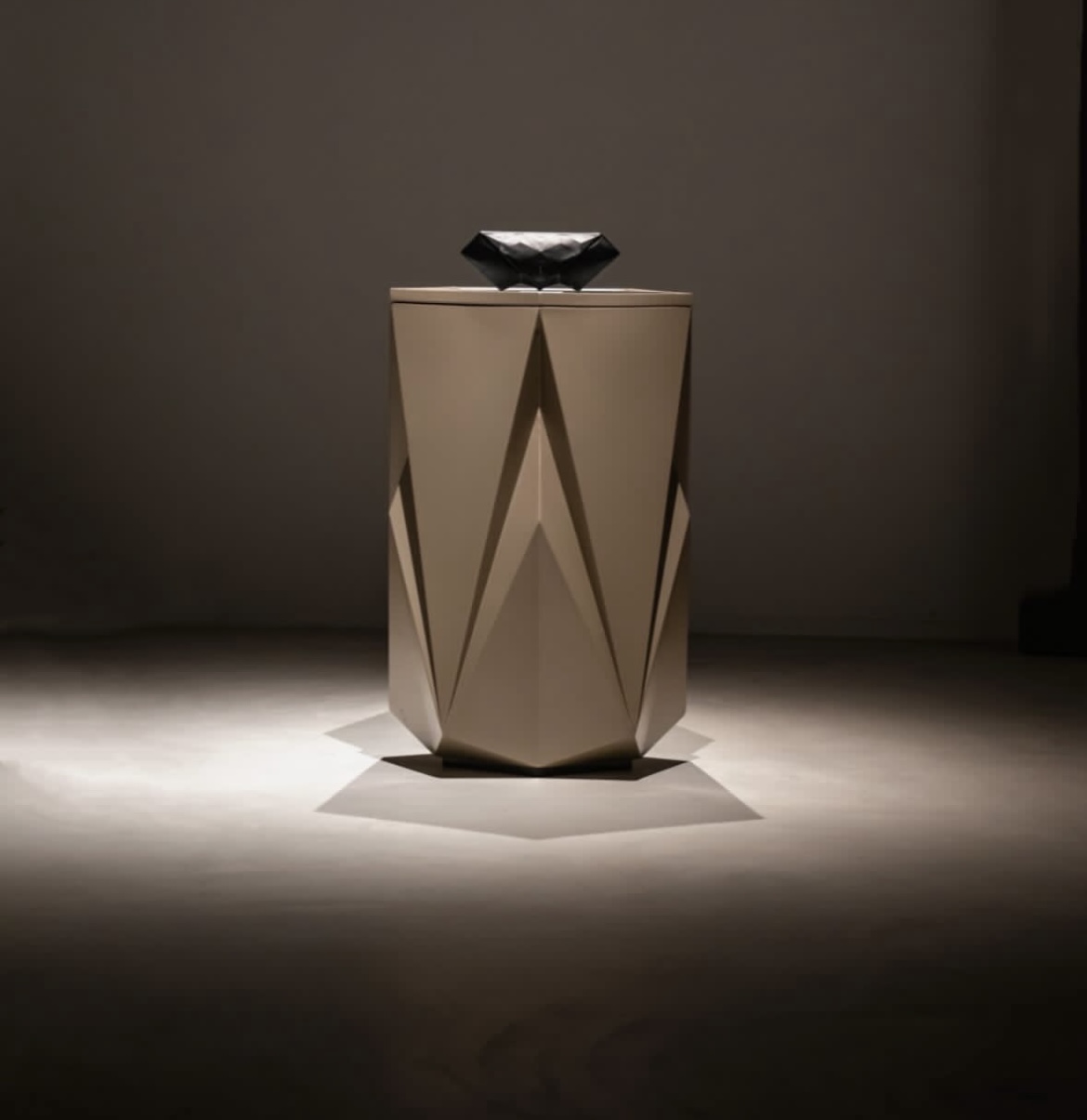

Change in the production process of Darsa bags
The process of producing the new Dersa bag was a three-year process in which eight different versions, modeling and more than 50 components of the product were made and checked step by step. The making of its mold also came to a conclusion after 7 months of continuous effort. The production of each bag in Dersa brand takes a week and due to the precision and elegance used in it, this product is produced in limited quantities.
In total, only 50 bags of this special series will be produced, each of them designed by hand with unique details. It should be noted that bags number 1 to 10 are not sold and are kept as prototypes. Bags number 11 to 30 will be available to customers and can be purchased, and the remaining 20 bags from this collection will be available next year. This approach to limited production and precision in design makes each bag not only a commodity, but a work of art.
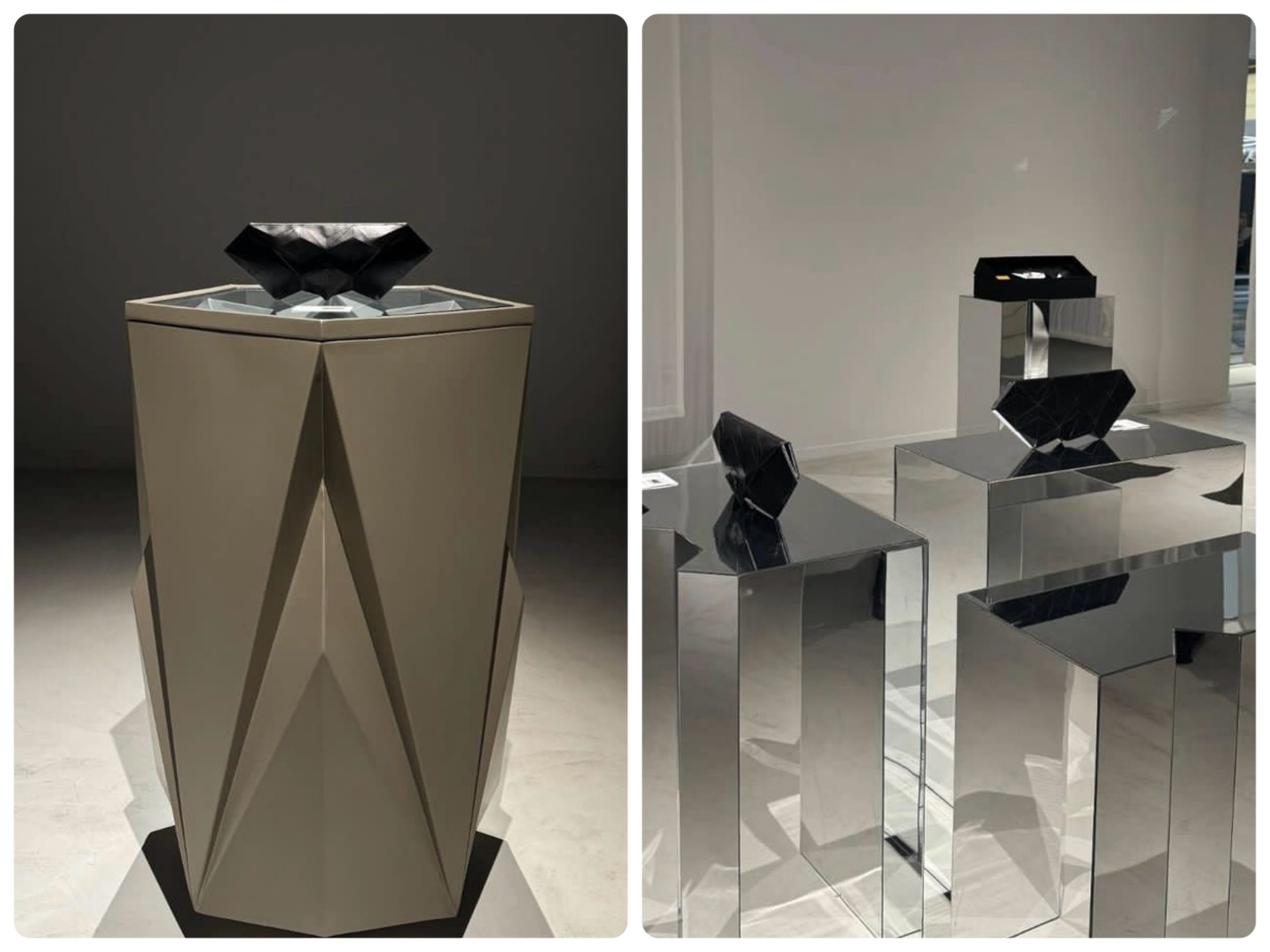

fashion; The intersection of art and technology
Using interdisciplinary interactions, Darsa has created a product that is unique in terms of complexity in art and technology. This project is a combination of architecture, interior design and technology that beautifully shows the ability to combine Iranian architecture and modern technology. Darsa’s unique bags are produced using the origami technique. The main structure of the bag is created using glue, and only two side seams of the bag are secured by stitching. This method, in addition to increasing the strength of the bag, gives it a clean and beautiful appearance.
To strengthen the internal structure of the bag, 15 mm metal rods or metal punches are used, and then the leather is placed on this structure; These metal elements give the bag more strength. Focusing on unique designs and quality production, Darsa, as a leading brand in the market, continues to create a special experience for its customers and helps to promote Iranian culture and art.
RCO NEWS

















